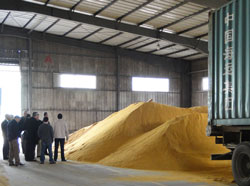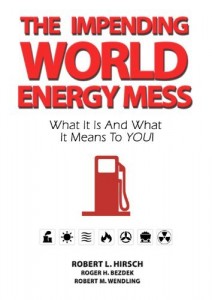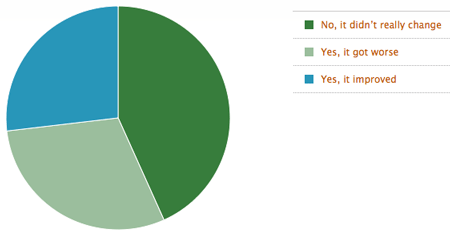 According to the National Alliance of Forest Owners (NAFO), the inclusion of biomass emissions (biogenic carbon emissions) in the EPA’s Clean Air Act greenhouse gas permitting program hinders growth of renewable energy. However, the Environmental Defense Fund (EDF) is countering their argument saying that there is public data on investments in biomass showing that it is in fact growing. The irony is that both groups cite the same study from Forisk Consulting to support their claims although the study was in fact funded by NAFO.
According to the National Alliance of Forest Owners (NAFO), the inclusion of biomass emissions (biogenic carbon emissions) in the EPA’s Clean Air Act greenhouse gas permitting program hinders growth of renewable energy. However, the Environmental Defense Fund (EDF) is countering their argument saying that there is public data on investments in biomass showing that it is in fact growing. The irony is that both groups cite the same study from Forisk Consulting to support their claims although the study was in fact funded by NAFO.
In December 2010, Forisk Consulting released a study titled, “Economic and Regional Impact Analysis of the Treatment of Biomass Energy Under the EPA Greenhouse Gas Tailoring Rule.” According to NAFO, the study found that the U.S. Environmental Protection Agency’s (EPA) Greenhouse Gas Tailoring Rule’s current treatment of biomass energy emissions will put over 130 renewable energy projects “at risk” for cancellation or delays.
“The Tailoring Rule is a powerful deterrent to forest biomass energy investments and job opportunities,” NAFO President and CEO David P. Tenny said of the study’s findings. “We’re already seeing the economic impact of the Tailoring Rule, as renewable energy projects are delayed or stopped altogether due to regulatory uncertainty. Left unchanged, the Tailoring Rule threatens the long-term viability of the biomass energy sector which, in turn, undermines the renewable energy goals of the Administration and Congress.”
Back in September, the Environmental Protection Agency (EPA) announced that it was considering equating biogenic carbon emissions with fossil fuel emissions under the Tailoring Rule, which requires the accounting and reporting of greenhouse gas emissions under the Renewable Fuels Standard (RFS2). Biogenic carbon emissions are those that are naturally created during the combustion and decay of woody biomass. In the past, the EPA has always considered them carbon neutral.
 However, according to EDF calculations, existing and announced wood bioenergy projects increased during the past year by nearly 35 percent–from 112 projects to 151 projects–across 11 southern states alone: Alabama, Arkansas, Florida, Georgia, Louisiana, Mississippi, North Carolina, South Carolina, Tennessee, Texas, and Virginia. (Only data from the southern U.S. is publicly available for the past year). According the report, the total expected demand for wood biomass increased by 10 million green tons, a 76 percent hike in wood biomass demand across the region.
However, according to EDF calculations, existing and announced wood bioenergy projects increased during the past year by nearly 35 percent–from 112 projects to 151 projects–across 11 southern states alone: Alabama, Arkansas, Florida, Georgia, Louisiana, Mississippi, North Carolina, South Carolina, Tennessee, Texas, and Virginia. (Only data from the southern U.S. is publicly available for the past year). According the report, the total expected demand for wood biomass increased by 10 million green tons, a 76 percent hike in wood biomass demand across the region.
“The science clearly shows that not all sources of biomass are equal in terms of their climate change impacts,” said Will McDow, manager of EDF’s Southeast Center for Conservation Incentives, and a member of both the North Carolina Forestry Technical Advisory Committee and Forestry Council. “The industry has known that EPA was planning to include biogenic emissions in permitting requirements in some way since last spring, yet this fact clearly has not dampened investors’ enthusiasm for bioenergy in 2010.”
McDow concluded, “The stakes are too high for EPA to rush to judgment in making biomass emission rules because these biomass plants will produce greenhouse gas emissions for 20 to 30 years. EPA needs to take the time to get the accounting right for biomass emissions to spur the right investments and policies our nation needs to protect forest sector jobs and the natural resources we depend upon.”
 Today is the last day of 2010 and the last chance to enter and win $250 in the ZimmComm web publication survey contest this month.
Today is the last day of 2010 and the last chance to enter and win $250 in the ZimmComm web publication survey contest this month.


 In this edition of “The Ethanol Report,”
In this edition of “The Ethanol Report,”  It was only a few weeks ago that U.S. corn growers were in China on a USGC-sponsored trade mission to promote both corn and DDGS for livestock feed in that country. According to a
It was only a few weeks ago that U.S. corn growers were in China on a USGC-sponsored trade mission to promote both corn and DDGS for livestock feed in that country. According to a 



 “Xylose is a wood sugar, a five-carbon sugar that is very abundant in lignocellulosic biomass but not in our food,” said Yong-Su Jin, a professor of food science and human nutrition at Illinois and a principal investigator on the study. “Most yeast cannot ferment xylose.” A big part of the problem with yeasts altered to take up xylose is that they will suck up all the glucose in a mixture before they will touch the xylose, Jin said. A glucose transporter on the surface of the yeast prefers to bind to glucose. “It’s like giving meat and broccoli to my kids,” he said. “They usually eat the meat first and the broccoli later.”
“Xylose is a wood sugar, a five-carbon sugar that is very abundant in lignocellulosic biomass but not in our food,” said Yong-Su Jin, a professor of food science and human nutrition at Illinois and a principal investigator on the study. “Most yeast cannot ferment xylose.” A big part of the problem with yeasts altered to take up xylose is that they will suck up all the glucose in a mixture before they will touch the xylose, Jin said. A glucose transporter on the surface of the yeast prefers to bind to glucose. “It’s like giving meat and broccoli to my kids,” he said. “They usually eat the meat first and the broccoli later.” It’s called the Load Toad™ and it was designed to allow rail cars to be packed more densely by forcing DDGS to the sides of the rail car, a process that is usually done by hand with a shovel. By distributing the DDGS load more evenly and efficiently, POET plants have been able to pack 3%-5% more DDGS into each car.
It’s called the Load Toad™ and it was designed to allow rail cars to be packed more densely by forcing DDGS to the sides of the rail car, a process that is usually done by hand with a shovel. By distributing the DDGS load more evenly and efficiently, POET plants have been able to pack 3%-5% more DDGS into each car.